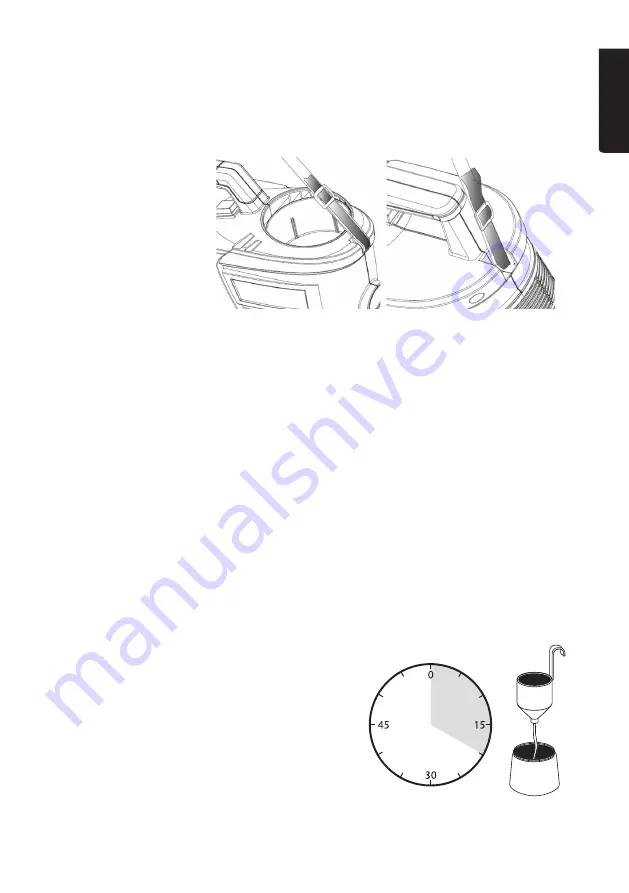
EN
G
LI
S
H
7
Operating instructions
Preparations
Attaching the shoulder strap
Suitable coating materials
Water- and solvent-based paints, 2-component paints, primers, clear finishes, vehicle
finishes, glazes, wood preservatives (sealants, oils, etc), wood stains, insecticides and
certain flour paints such as Falu Vapen.
Unsuitable coating materials
Emulsion paints, alkaline paints, calcimine paints (whitewash), materials with
a flashpoint below 21 °C.
Preparing the coating material (thinning)
Thoroughly shake the can of coating material before opening it. Coatings such as paints
normally need to be diluted/thinned before spraying. Test a small amount of the coating
before diluting it all. Follow the manufacturer’s advice for thinning the coating you are
using. Ask your local paint shop for advice if you are unsure, explain that you are using
a HVLP (high volume, low pressure) type spray gun. The thickness of a paint is denoted
by its viscosity and is measured by letting a certain amount of paint run through a hole
of a certain diameter. The longer it takes for the paint to run through the hole, the higher
the viscosity. Viscosity is measured in seconds.
Warning:
Only use coating materials and solvents with a flashpoint above 21 °C.
Fasten the shoulder
strap to the housing of
the air compressor and
adjust the length.
Measuring the viscosity:
1. Shake the container of paint before
performing a viscosity test.
2. Dip the entire viscosity cup into the coating
material so that it fills completely.
3. Hold up the viscosity cup and measure how
long it takes for the paint to run through the hole.
4. Dilute the paint if it is too thick and measure
it again.








































